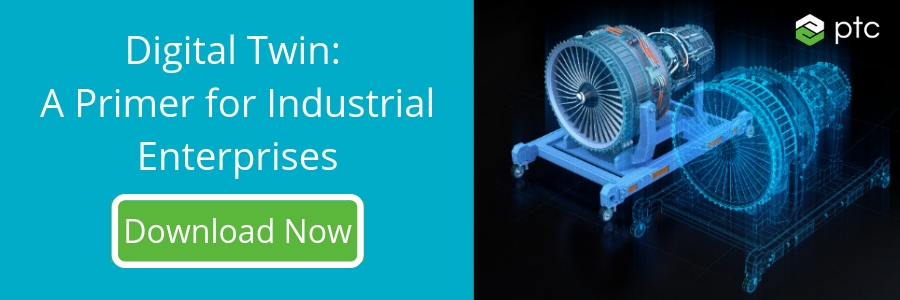
Manufacturing operations are increasingly complex as the real-time, flawless performance of myriad assets are a necessity and differentiation through digital transformation is becoming a required strategic initiative.
Yet with increasing global competition and disruptive marketplaces there is still internal resistance with the current cross-exchanging of physical and digital information in a manufacturer’s operations between products, processes, and people, within different value chain functions.
Digital twins are ideal to harmonize the siloed discord across manufacturing operations from design, process, up through service, driving significant operational efficiencies. These benefits are being recognized by manufacturers today. Volvo is improving its factory’s flexibility, agility, and quality through a digital thread of the engine quality assurance process. Woodward is lowering manufacturing costs and improving production quality with role-based views of operations. Howden is proving unified data views and instant access of its assets for customers and service networks.
A digital twin isn’t limited to a single application nor a single role across manufacturing operations; its value is recognized through contextualized information delivery. This could be work order information to a service technician for maintenance or factory data for an executive to make strategic decisions, among countless other examples.
What contextualized view or ‘lens’ the digital twin application is delivered in depends on the role, use case, and desired business value.
The variety in manufacturing roles and worker tasks is immense; a manager must be aware of the entire factory and production visibility, whereas floor staff will only be concerned with a few specific metrics and performance of machines.
For digital twin value to be recognized the insights need to tie directly to a workflow/ task and accompanying goal:
Much of the market strictly associates digital twins with heavy-industrial machines and while there is tremendous usage and value in this application, the concept expands to more complex industrial processes where digital twins of a wide-array of assets are not solely reserved to a machine, a single role, or use case.
A broad view for a manufacturing executive is a good way to think of how extensive manufacturing processes and operations are and can be fueled through digital twins. Production environments are extremely intricate as a mix of paper-based and digitized information is constantly flowing from facility-to-facility, workstation-to-workstation, and throughout a product’s lifetime and real-world deployment.
This visibility across many connected assets through a digital twin ‘lens’ at the management level, unlocks an array of positive business outcomes. This starts with increased visibility but extends to predictability into what will happen, and insight into what has happened.
Whether its maintaining uptime to improve customer satisfaction or using performance data to create differentiated products, digital twins can have tremendous and widespread business impact on manufacturing operations.
For an executive, digital twins of these assets and processes generate real-time adjustments to production expectations that can better inform an executive on daily strategic decision-making.
Here are a few examples of insights that could be derived from a digital twin of a fleet of remote assets or products:
These three different roles common in a manufacturer’s organizational hierarchy and the potentially thousands of workers reporting to them represent the vast magnitude digital twins can have on operations and the value chain underpinning it.
Front-line workers are increasingly empowered through innovative technologies such as augmented reality to interact with digital twins. An HMI inclusive of a digital twin with overlaid contextualized information can drastically improve a technician’s service KPIs or an operator’s assets uptime.
Digitizing asset and process information flow is required in increasingly competitive manufacturing marketplaces. Near-term digital twin value in manufacturing operations begins by compounding in-house technologies, and is further empowered by complementary technologies, including IIoT, cloud computing, artificial intelligence, simulation, and augmented reality, among others.
Starting on a digital transformation journey begins with identifying the greatest business value and pressing needs for the organization, then selecting the digital transformation strategic partner with a shared vision and fitting solution. In the industrial world, digital twins will continue to be the most promising value proposition and a key stakeholder consideration for revolutionizing manufacturing operations.

David Immerman is a business analyst on PTC’s Corporate Marketing team providing thought leadership on technologies, trends, markets, and other topics. Previously David was an industry analyst in 451 Research’s Internet of Things channel primarily covering the smart transportation space and automotive technology markets, including fleet telematics, connected cars, and autonomous vehicles. He also spent time researching IoT-enabling technologies and other industry verticals including industrial. Prior to 451 Research, David conducted market research at IDC.
©Copyright 2025. All rights reserved by Modelcam Technologies Private Limited PUNE.